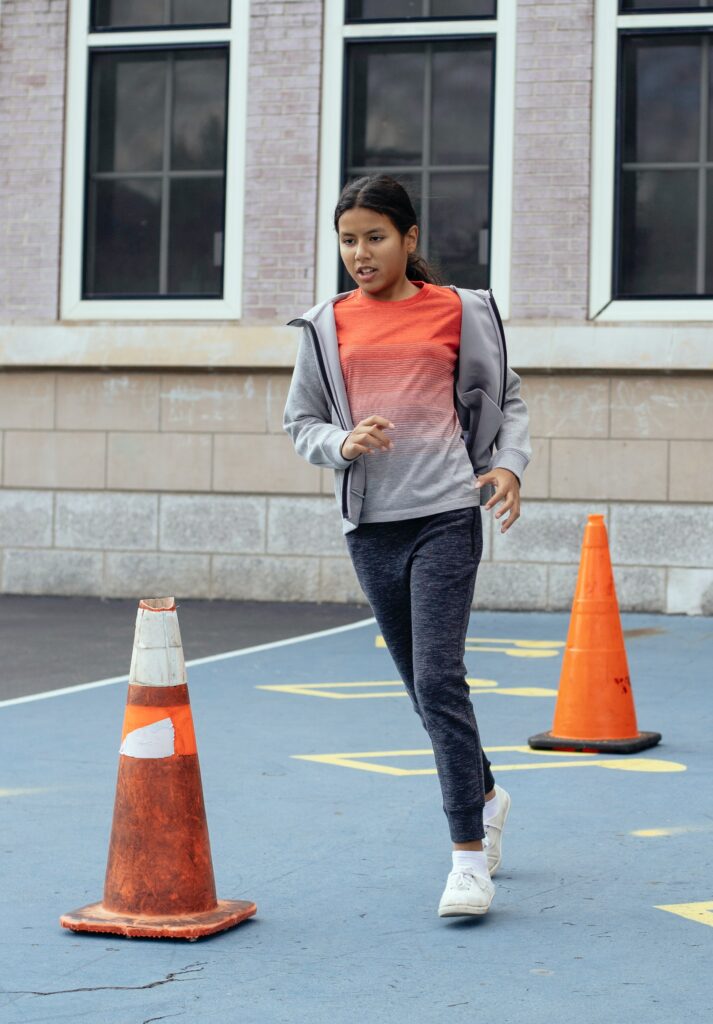
Introduction
In this article we will explore what dyslexia is and the challenges that dyslexic students face in PE. We will go on to look at how dyslexia can be a strength in PE and consider strategies that can help make PE more inclusive for dyslexic students.
What Is Dyslexia?
Dyslexia can be defined as ‘difficulties in processing language-based information’. Dyslexia is a continuum of needs and abilities, with each person experiencing the condition ‘in a way that is unique to them’. This can explain why some children may struggle with certain sports and others may excel in it. Some people don’t have difficulties with reading, but struggle with organisation and memory.
How Common Is It?
Dyslexia is the most common Specific Learning Difficulty. Estimates suggest that 1 in 10 people in the UK are dyslexic, but it often isn’t formally identified. Studies show that 80% of children leave school undiagnosed. Dyslexia often co-occurs with DCD, Autism and ADHD.
Impact on PE
Kelly’s dance teacher spends five minutes explaining to the class what to do. As there are no visuals, Kelly struggles to process what is being said. While the music is playing the teacher gives instructions about moving forwards, backwards, left and right. Kelly can’t keep up with the rapidly changing directions and can’t remember what she is supposed to do. She can’t time her movements to the music.
What impact does dyslexia have on PE? Dyslexic children may have difficulties with processing verbal instructions and also with any reading and writing that may be required. As we saw in the example of Kelly above, dyslexic children may also experience difficulties in the following areas:
• Motor planning – struggling to plan a sequence of moves
• Short-term memory – difficulty remembering rules of games or strategies
• Sense of direction and knowing left from right
• Judging speed and direction
• Managing time
• Tiredness, avoids some activities, distracted – everything is extra effort
• Co-ordination – especially ball games and team sports e.g. dropping things, tripping
• Learning new processes and skills
• Concentration
• Organising self and equipment
Many of the difficulties dyslexic children experience in PE come when our teaching places a lot of emphasis on verbal language, logical sequences and remembering details. Next, we will look at how we can capitalise on children’s strengths.
Dyslexic Strengths
Although dyslexic children face many challenges, dyslexia can also be a strength. Strengths that are often attributed to dyslexia include:
• Holistic big picture thinking
• Strategic and intuitive
• Creativity and problem solving – thinks ‘outside the box’
• Visual thinker and can identify patterns and links between novel concepts
• Determination and endurance
• Patient and empathetic with others
• Good long-term memory
• Strong verbal communication skills
• Good social skills and emotional intelligence
Dyslexic Strengths in Sport
Below are some examples of how sports people have brought the strengths of dyslexia to their sport:
• A baseball player found that his big picture thinking helped him to step back and detect patterns in the play
• Everton striker Steven Naismith attributes his problem solving skills and ability to predict outcomes to helping him score goals
Researchers at the University of Hull write: “In the best circumstances, dyslexia and dyspraxia are an opportunity to excel.”
Using the strategies below, we can adapt our teaching to enable children to excel.
Strategies
Strategy #1: Always provide visual and verbal instructions. Keep instructions short and simple and don’t expect students to listen to instructions while performing. Repeat instructions and provide visual reminders of rules or techniques.
Strategy #2: Allow more thinking and processing time.
Strategy #3: Recognise the extra effort children are making.
Strategy #4: Allow room in PE for creativity (see Listen to Students’ Voice chapter in ‘Inclusive PE for SEND Children‘) as this is a strength.
Strategy #5: Provide a big picture overview at the start of teaching. This will help dyslexic children who find it easier to understand big picture concepts than details.
Dyslexic Sports People
• Rio Ferdinand – Footballer
• Muhammad Ali – World champion boxer
• Sir Steve Redgrave – Olympic rower
• Michelle Carter Olympic gold medallist shot-putter
• Darcey Bussell DBE – Former principal dancer at the Royal
Ballet, ex-Strictly Come Dancing judge
This article was taken from the book ‘Inclusive PE for SEND Children’ which is available here.
